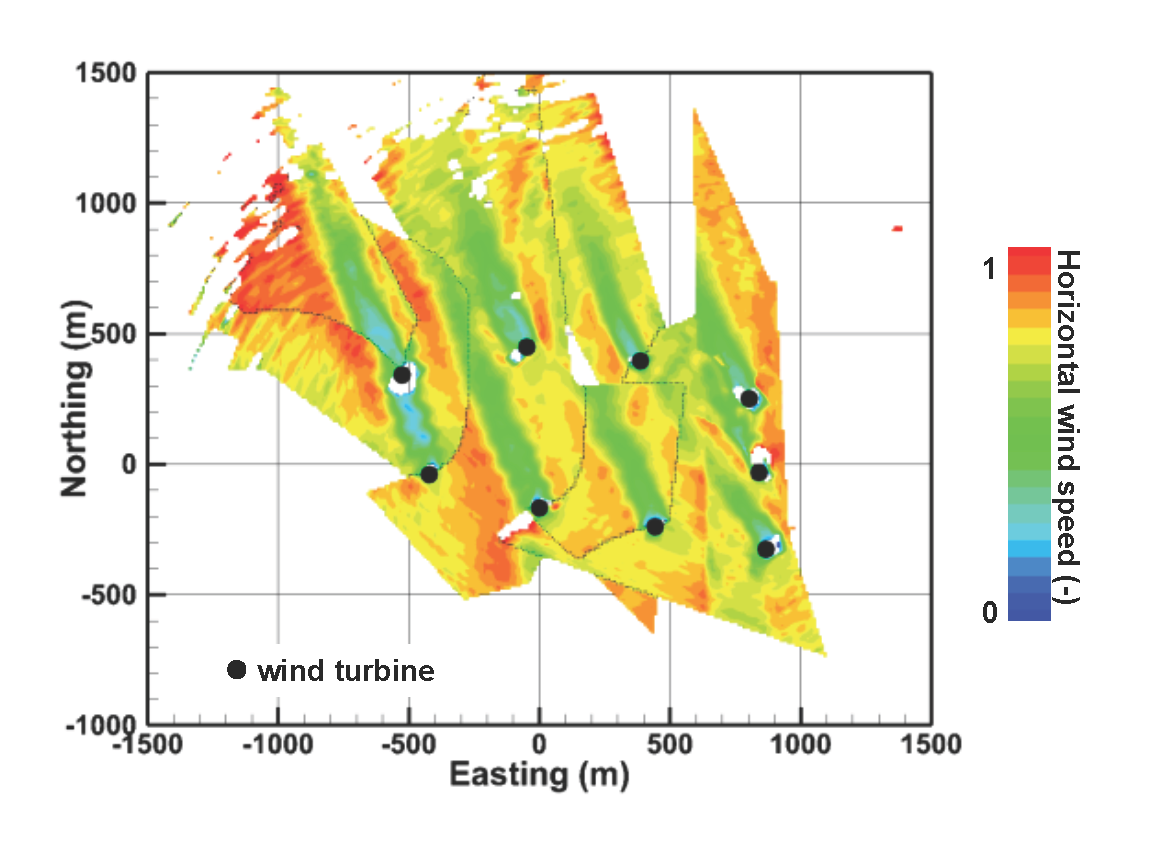Wind-Farm-Scale Measurements Using Mobile-Based LiDAR
45% of electricity generated from renewables by 2030 is targeted in Europe. As wind-generated electricity will be a substantial portion of this new generation, reducing the cost of wind-generated electricity is imperative. We have developed a novel large-scale measurement system that provides for optimised micrositing of wind turbines in new wind farms.
In wind farms, wakes – that is the relatively low speed, high turbulence flow region downstream of a wind turbine – result in 10-20% lower energy yields of wind farms and up to 80% higher fatigue loads on wind turbines that operate in wakes. The lower energy yields translate into lower revenues for operators of wind farms, and the higher loads result in increased maintenance costs. An improved knowledge of the characteristics of wakes is thus important in the design and operation of wind farms. As the physical processes in the wakes, such as turbulent mixing, entrainment, etc. are dependent on length-scale, wind tunnels are of limited usefulness in supporting efforts to improve our knowledge of wakes in utility-scale wind farms. We have designed and built a mobile laboratory, windRoverII, to make measurements in utility-scale wind farms. windRoverII is equipped with a 3D scanning LiDAR system to measure wind field over an area of up to 6km by 6km, and heights of up to 250m. As a LiDAR measures the wind speed along its line-of-sight, we have developed fully automated software, that determines the optimum scanning positions in a given area or wind farm, directs the driver of windRoverII to specified positions, determines and executes scan pattern of measurements from each position, and visualises the measurements in real-time. Predictions from numerical simulations and semi-empirical wake models are being compared with our utility-scale measurements in order to further improve these modeling tools. Thus, our new measurement approach is well suited to help in the reduction of the cost of wind-generated electricity in new wind farms.
The ESC Member involved in this project is Professor Reza Abhari who has been full professor of energy technologies and the Director of Laboratory for Energy Conversion (LEC) at ETH Zurich since 1999. His group focuses in research on developing break-through technologies for a broad range of scientific and technological areas with societal impact. Current research involves analytical, computational and experimental research and eductation related to technology and economics of turbomachinery, gas turbine technology, wind energy, power generation systems, aerospace, advanced diagnostic sensor and actuator technologies, and semiconductor industries.
